
Recently Viewed
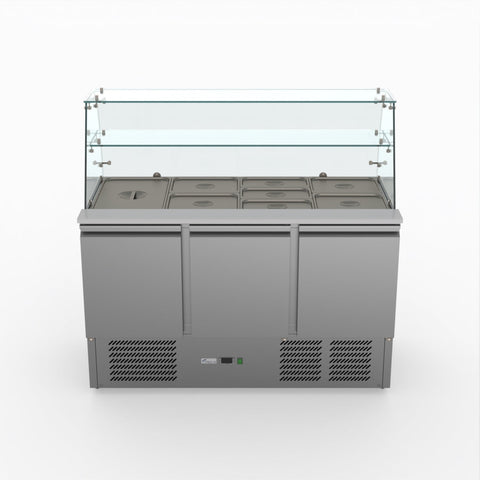

 FED-X Three Door Salad Prep Fridge With Glass Top XS903GC
FED-X Three Door Salad Prep Fridge With Glass Top XS903GC
1365(W) x 700(D) x 1310(H)mm
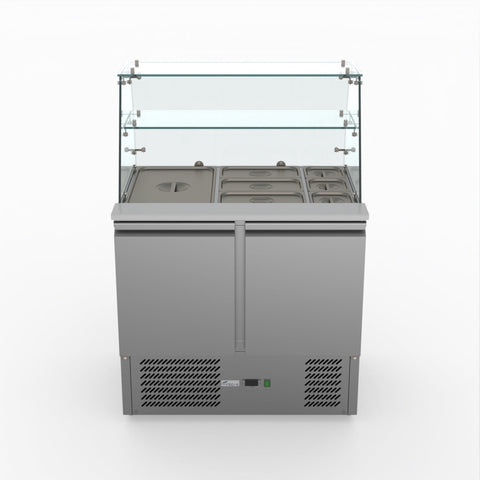

 FED-X Two Door Salad Prep Fridge With Square Glass Top XS900GC
FED-X Two Door Salad Prep Fridge With Square Glass Top XS900GC
903(W) x 700(D) x 1310(H)mm
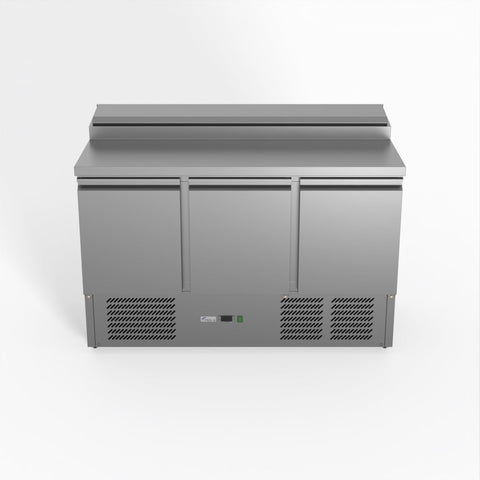

 FED-X Three Door Salad Prep Fridge XGNS1300D
FED-X Three Door Salad Prep Fridge XGNS1300D
1368(W) x 700(D) x 1020(H)mm


 FED-X S/S Three Door Sandwich Counter XSS7C18S3V
FED-X S/S Three Door Sandwich Counter XSS7C18S3V
1795(W) x 700(D) x 1406(H)mm
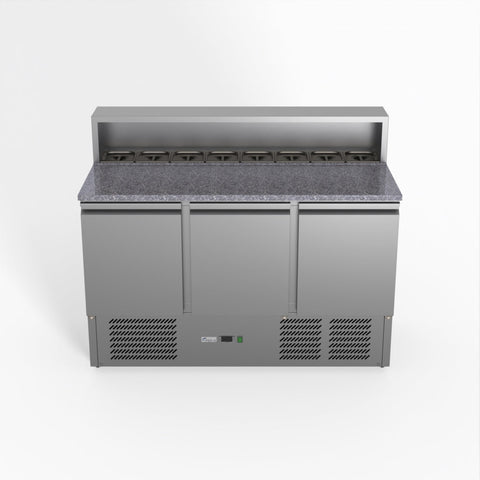

 FED-X Three Door Salad Prep Fridge With Marble Top XGNS1300E
FED-X Three Door Salad Prep Fridge With Marble Top XGNS1300E
1368(W) x 700(D) x 1107(H)mm


 FED-X Two Door Salad Prep Fridge XGNS900D
FED-X Two Door Salad Prep Fridge XGNS900D
903(W) x 700(D) x 1020(H)mm
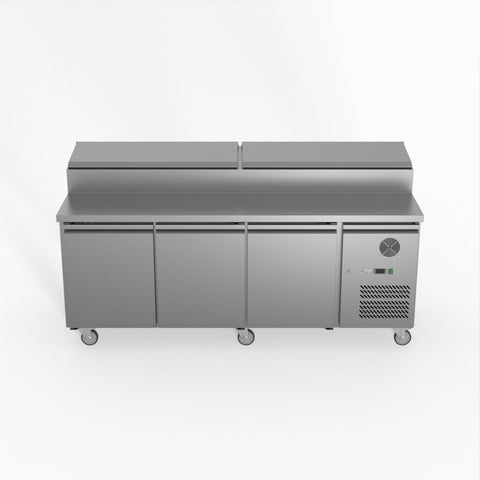

 FED-X S/S Three Door Sandwich Counter XSS8C20S3V
FED-X S/S Three Door Sandwich Counter XSS8C20S3V
2020(W) x 800(D) x 1406(H)mm
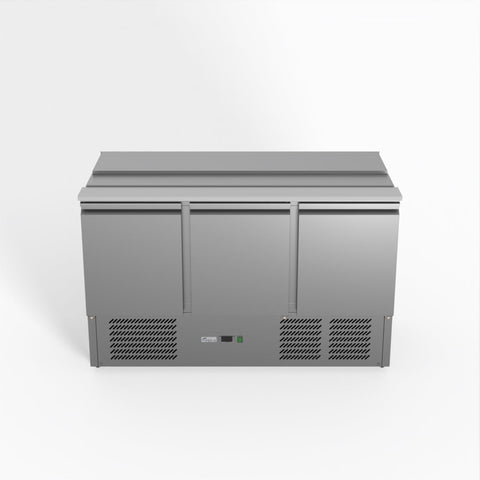

 FED-X Three Door Salad Prep Fridge XGNS1300S
FED-X Three Door Salad Prep Fridge XGNS1300S
1368(W) x 700(D) x 898(H)mm
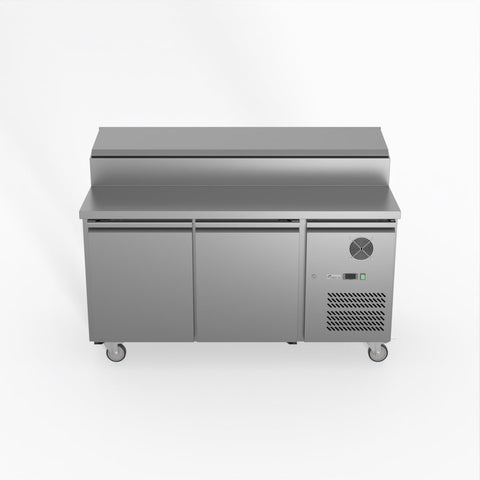

 FED-X S/S Two Door Sandwich Counter XSS8C15S2V
FED-X S/S Two Door Sandwich Counter XSS8C15S2V
1510(W) x 800(D) x 1406(H)mm

 Thermaster Three Door Salad Marble Prep Top GNS1300E
Thermaster Three Door Salad Marble Prep Top GNS1300E
1368(W) x 700(D) x 1195(H)mm
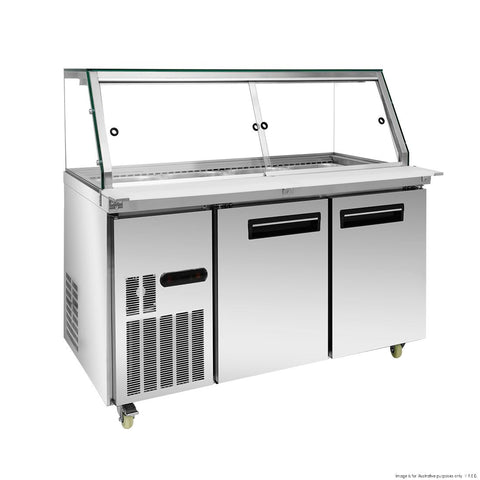

 Thermaster Cold Salad & Noodle Bar 4x1/1 GN Pans PG150FA-XG
Thermaster Cold Salad & Noodle Bar 4x1/1 GN Pans PG150FA-XG
1460(W) x 790(D) x 1280(H)mm
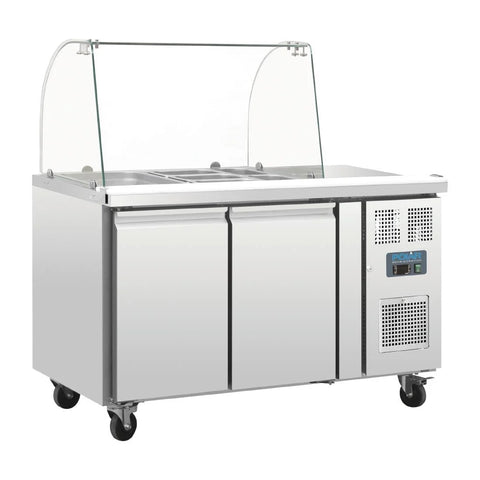

 Polar U-Series Double Door Refrigerated Gastronorm Saladette Counter - CT393-A
Polar U-Series Double Door Refrigerated Gastronorm Saladette Counter - CT393-A
1260(W) x 860(H) x 700(D)mm
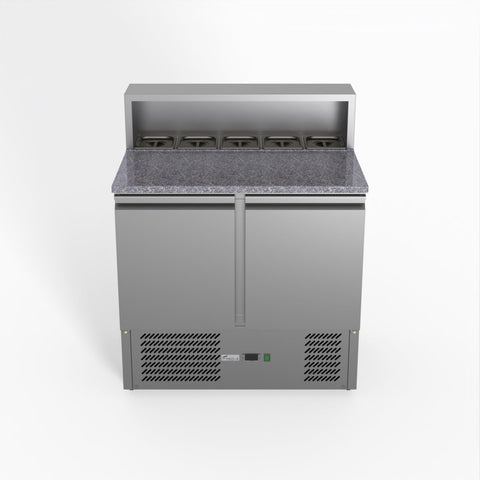

 FED-X Two Door Salad Prep Fridge With Marble Top XGNS900E
FED-X Two Door Salad Prep Fridge With Marble Top XGNS900E
903(W) x 700(D) x 1107(H)mm
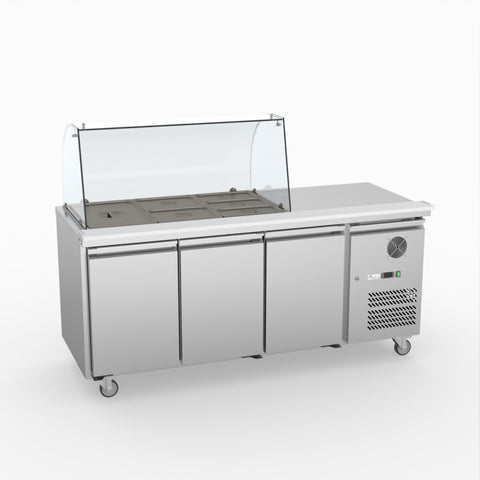

 FED-X Three Door Salad Prep Fridge With Curve Glass Top XTHP3100SALGC
FED-X Three Door Salad Prep Fridge With Curve Glass Top XTHP3100SALGC
1795(W) x 700(D) x 1320(H)mm

 Skipio 568 Three Door Salad Prep Buffet Fridge SSR18-3
Skipio 568 Three Door Salad Prep Buffet Fridge SSR18-3
1800(W) x 700(D) x 855(H)mm

 Skipio 432 Two Door Salad Prep Fridge with Hood Lid SHR12-2
Skipio 432 Two Door Salad Prep Fridge with Hood Lid SHR12-2
1200(W) x 700(D) x 1028(H)mm
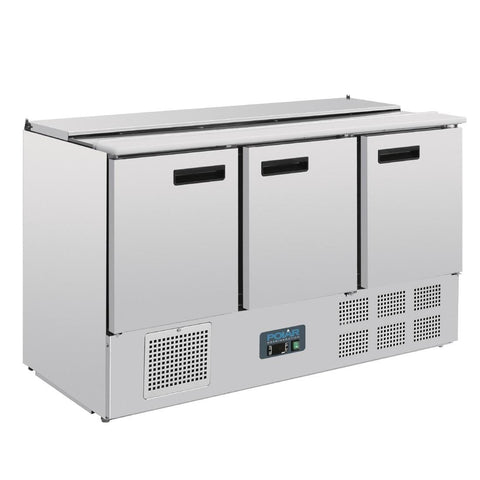

 Polar G-Series Saladette Counter Fridge 368Ltr - G607-A
Polar G-Series Saladette Counter Fridge 368Ltr - G607-A
1370(W) x 885(H) x 700(D)mm

 Turbo Air 2 Door Hooded Salad Prep Fridge - 1200mm Width KHR12-2-N
Turbo Air 2 Door Hooded Salad Prep Fridge - 1200mm Width KHR12-2-N
1200(W) x 700(D) x 1028(H)mm
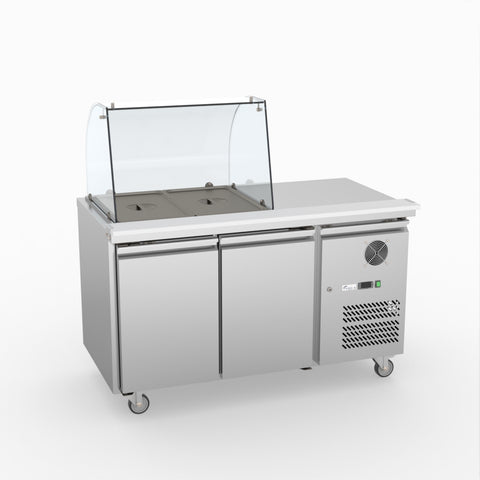

 FED-X Two Door Salad Prep Fridge With Curve Glass Top XTHP2100SALGC
FED-X Two Door Salad Prep Fridge With Curve Glass Top XTHP2100SALGC
1360(W) x 700(D) x 1320(H)mm
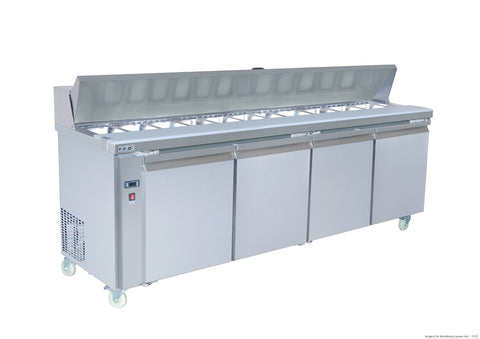

 Thermaster Four Door Sandwich Bar SLB240
Thermaster Four Door Sandwich Bar SLB240
2400(W) x 750(D) x 1090(H)mm
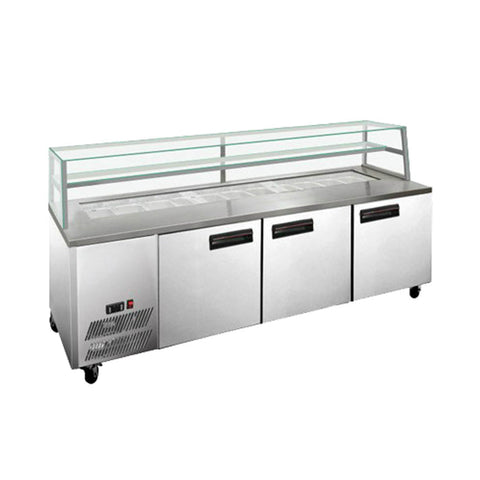

 Thermaster Three Door Deluxe Sandwich Bar SCB/21
Thermaster Three Door Deluxe Sandwich Bar SCB/21
2180(W) x 700(D) x 1255(H)mm
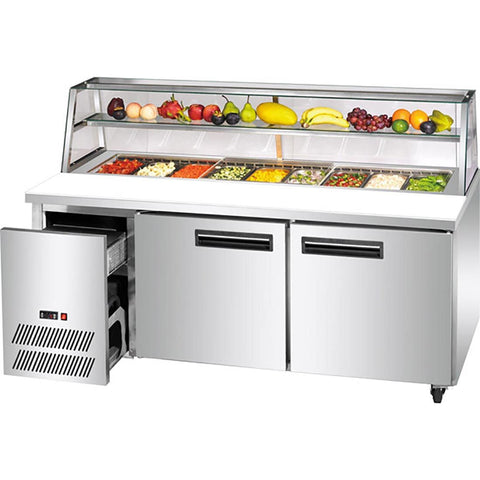

 Thermaster Two Large Door Deluxe Sandwich Bar SCB/18
Thermaster Two Large Door Deluxe Sandwich Bar SCB/18
1820(W) x 700(D) x 1255(H)mm
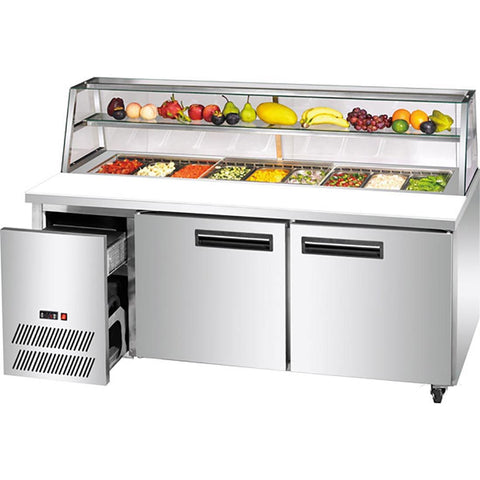

 Thermaster Two Door Deluxe Sandwich Bar SCB/15
Thermaster Two Door Deluxe Sandwich Bar SCB/15
1480(W) x 700(D) x 1255(H)mm
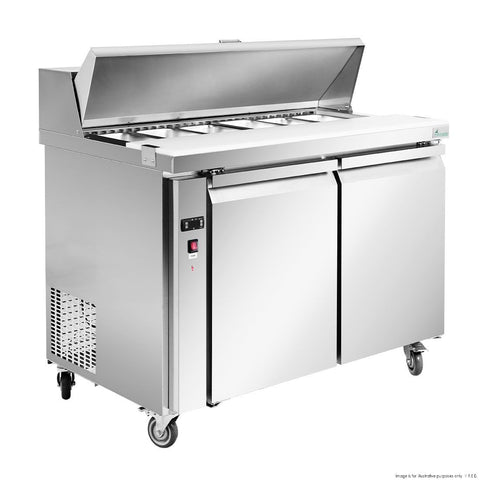

 Thermaster Two Door Sandwich Bar SLB120
Thermaster Two Door Sandwich Bar SLB120
1200(W) x 750(D) x 1090(H)mm
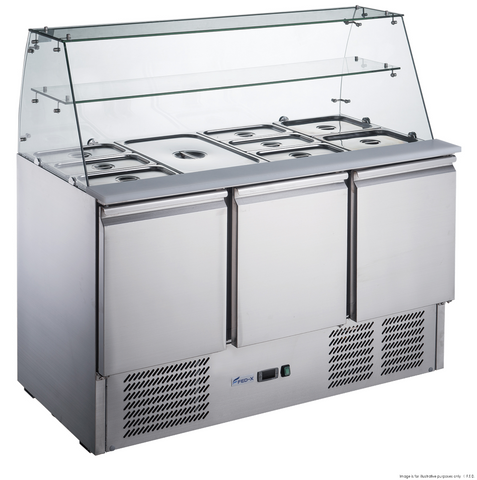

 2NDs: FED-X Three Door Salad Prep Fridge with Glass Top - XS903GC-QLD374
2NDs: FED-X Three Door Salad Prep Fridge with Glass Top - XS903GC-QLD374
1310(W) x 700(D) x 1390(H)mm
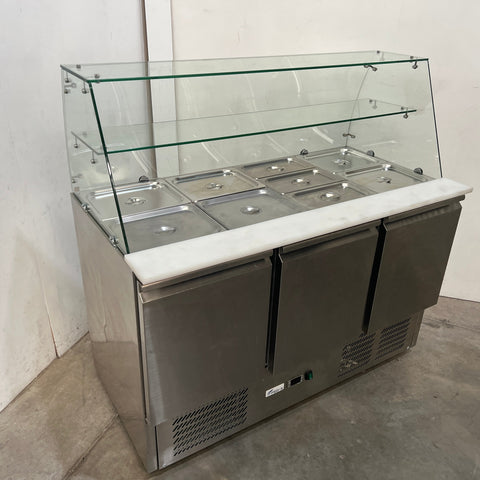

 FED-X XS903GC Sandwich Prep Fridge - 851771
FED-X XS903GC Sandwich Prep Fridge - 851771
1368W x 1310D x 700Hmm
1368W x 700D x 1310Hmm
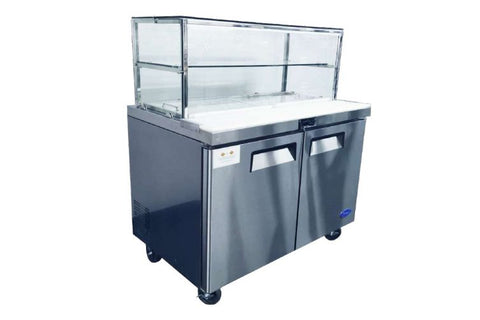

 Atosa 2 Door Sandwich Bar With Glass Canopy
Atosa 2 Door Sandwich Bar With Glass Canopy
1225-1530(W) x 762(D) x 1420(H)mm

 Atosa 2 Door Sandwich Bar With Glass Canopy 1530Mm MSF8303G
Atosa 2 Door Sandwich Bar With Glass Canopy 1530Mm MSF8303G
1530(W) x 762(D) x 1420(H)mm

 Atosa 2 Door Sandwich Bar With Glass Canopy 1225Mm MSF8302G
Atosa 2 Door Sandwich Bar With Glass Canopy 1225Mm MSF8302G
1225(W) x 762(D) x 1420(H)mm

 Turbo Air 1 Door Salad Prep Fridge KSR9-1-N
Turbo Air 1 Door Salad Prep Fridge KSR9-1-N
900(W) x 700(D) x 850(H)mm
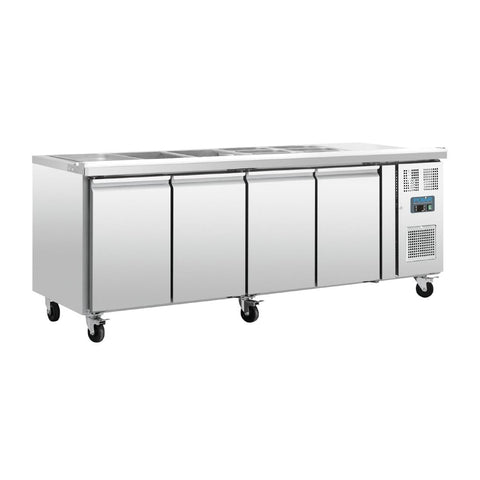

 Polar 4 Door Saladette Counter - FT285-A
Polar 4 Door Saladette Counter - FT285-A
2220(W) x 850(H) x 700(D)mm
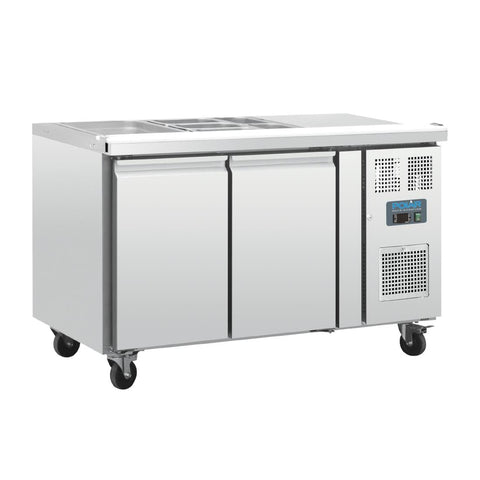

 Polar 2 Door Saladette Counter - FT281-A
Polar 2 Door Saladette Counter - FT281-A
1260(W) x 850(H) x 700(D)mm

 Skipio 293 One Door Salad Prep Fridge with Hood Lid SHR9-1
Skipio 293 One Door Salad Prep Fridge with Hood Lid SHR9-1
900(W) x 700(D) x 1028(H)mm

 Skipio 702 Three Door Salad Prep Fridge with Hood Lid SHR18-3
Skipio 702 Three Door Salad Prep Fridge with Hood Lid SHR18-3
1800(W) x 700(D) x 1028(H)mm
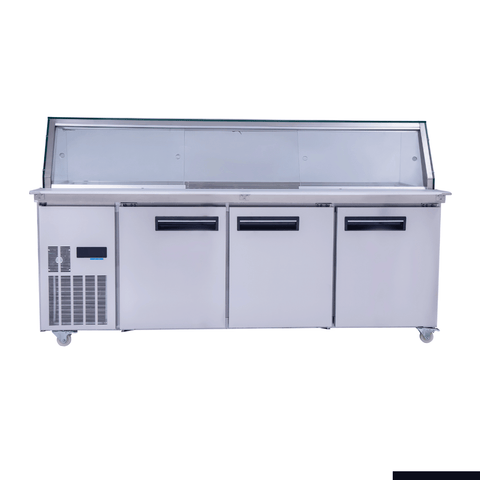

 Thermaster Cold Salad & Noodle Bar 6x1/1 GN Pans PG210FA-XG
Thermaster Cold Salad & Noodle Bar 6x1/1 GN Pans PG210FA-XG
2140(W) x 790(D) x 1280(H)mm
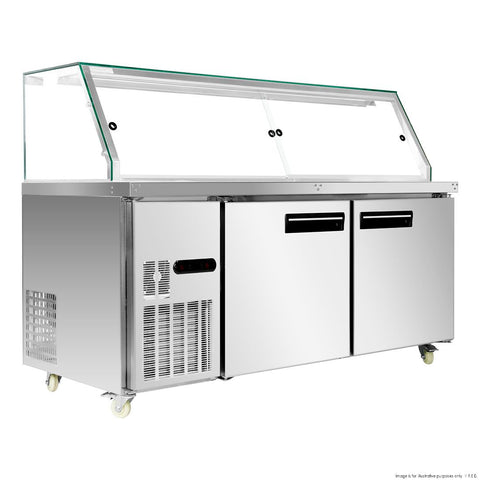

 Thermaster Cold Salad & Noodle Bar 5x1/1 GN Pans PG180FA-XG
Thermaster Cold Salad & Noodle Bar 5x1/1 GN Pans PG180FA-XG
1800(W) x 790(D) x 1280(H)mm
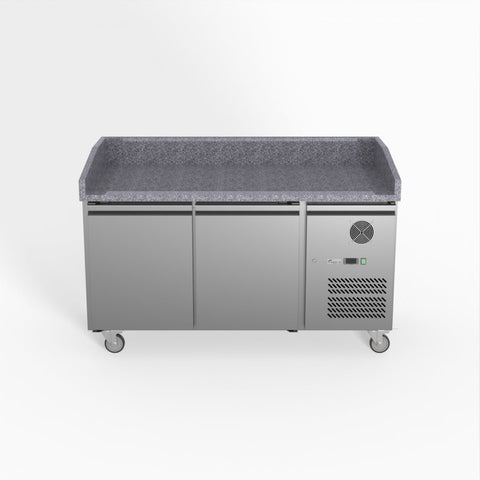

 FED-X Two Door Standard Saladette XPZ2600TN
FED-X Two Door Standard Saladette XPZ2600TN
1510(W) x 800(D) x 990(H)mm
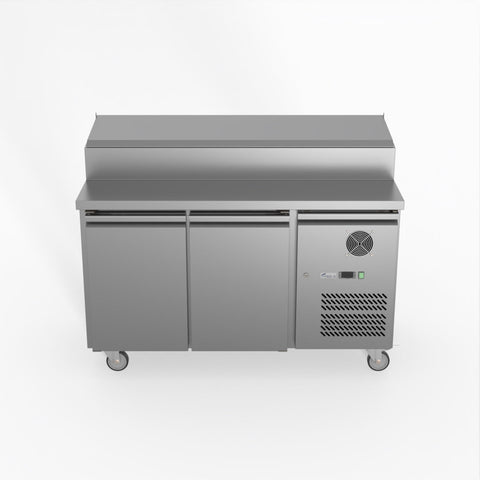

 FED-X S/S Two Door Sandwich Counter XSS7C13S2V
FED-X S/S Two Door Sandwich Counter XSS7C13S2V
1360(W) x 700(D) x 1406(H)mm
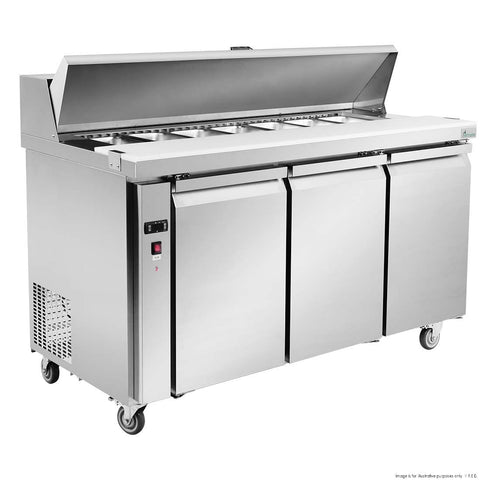

 Thermaster Three Door Sandwich Bar SLB150
Thermaster Three Door Sandwich Bar SLB150
1500(W) x 750(D) x 1090(H)mm
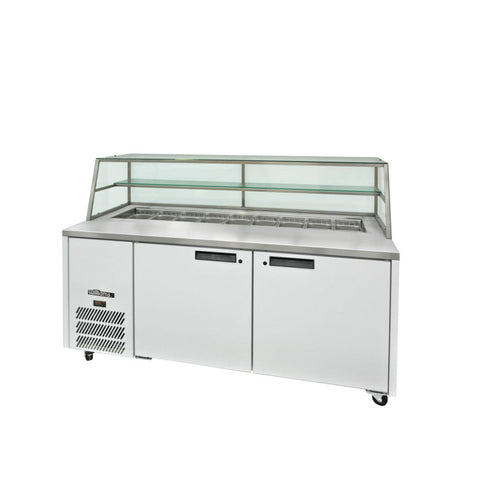

 Williams Jade Sandwich - Two Door White Colorbond Prep Counter Refrigerator With Blown Air Well HJ2SCBA
Williams Jade Sandwich - Two Door White Colorbond Prep Counter Refrigerator With Blown Air Well HJ2SCBA
1815(W) x 771(D) x 845(H)mm
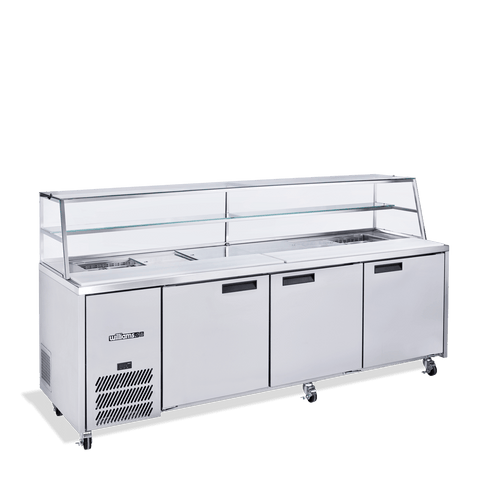

 Williams Jade Sandwich - Three Door Stainless Steel Prep Counter Refrigerator With Blown Air Well HJ3SCBASS
Williams Jade Sandwich - Three Door Stainless Steel Prep Counter Refrigerator With Blown Air Well HJ3SCBASS
2476(W) x 771(D) x 845(H)mm
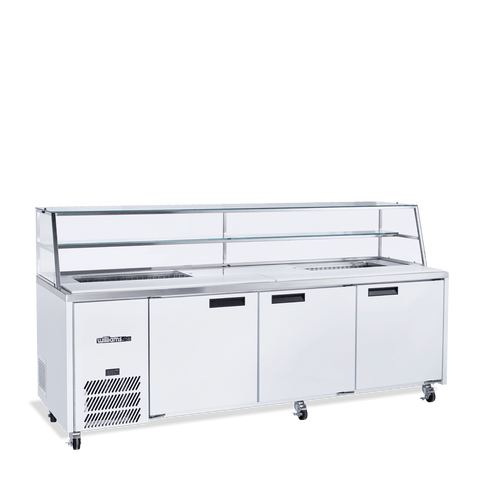

 Williams Jade Sandwich - Three Door White Colorbond Prep Counter Refrigerator With Blown Air Well HJ3SCBA
Williams Jade Sandwich - Three Door White Colorbond Prep Counter Refrigerator With Blown Air Well HJ3SCBA
2476(W) x 771(D) x 845(H)mm
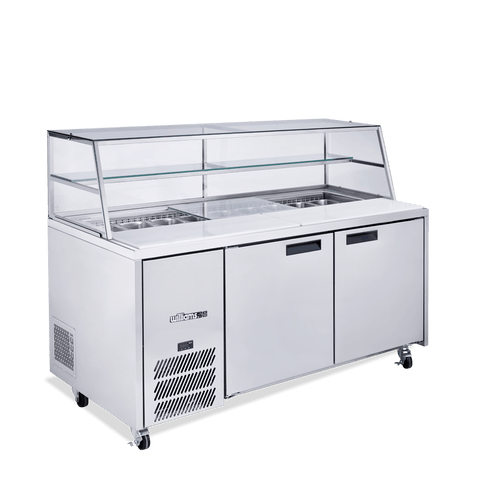

 Williams Jade Sandwich - Two Door Stainless Steel Prep Counter Refrigerator With Blown Air Well HJ2SCBASS
Williams Jade Sandwich - Two Door Stainless Steel Prep Counter Refrigerator With Blown Air Well HJ2SCBASS
1815(W) x 771(D) x 845(H)mm
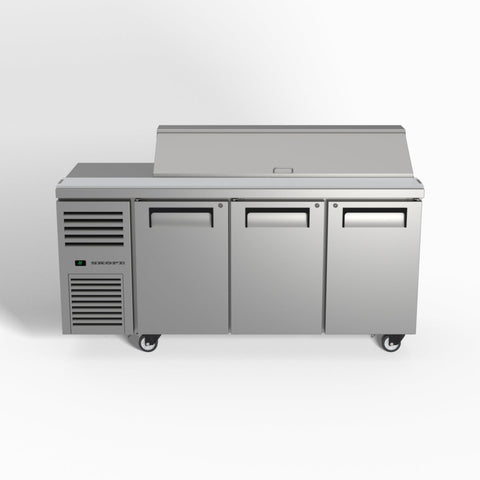

 Skope ReFlex 3 Solid Door GN Compatible Salad Preparation Fridge 357L - RF7.PPS.3.SD
Skope ReFlex 3 Solid Door GN Compatible Salad Preparation Fridge 357L - RF7.PPS.3.SD
1800(W) x 1110(H) x 700(D)mm
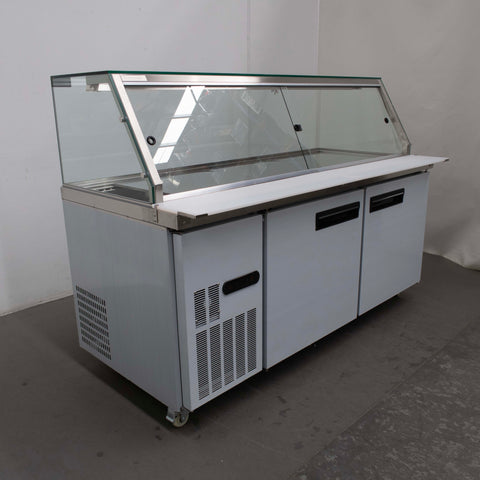

 Thermaster PG180FA-XG Sandwich Prep Bench - 909113
Thermaster PG180FA-XG Sandwich Prep Bench - 909113
1800W x 790D x 1285Hmm
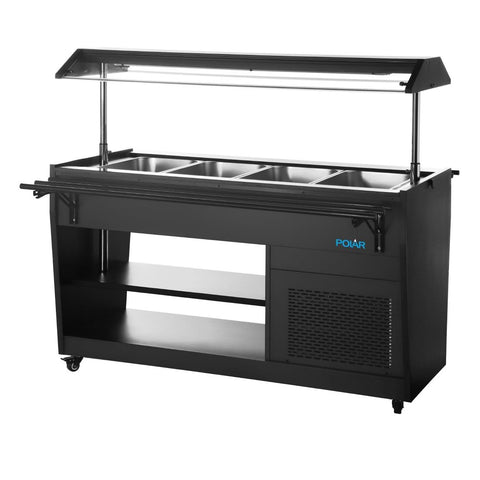

 Polar G-Series Refrigerated Buffet Bar Black - PG007-A
Polar G-Series Refrigerated Buffet Bar Black - PG007-A
1058(W) x 1356(H) x 740(D)mm
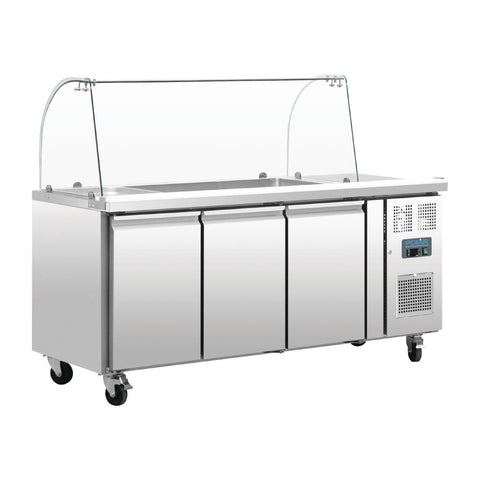

 Polar U-Series Triple Door Refrigerated Gastronorm Saladette Counter - CT394-A
Polar U-Series Triple Door Refrigerated Gastronorm Saladette Counter - CT394-A
1795(W) x 1360(H) x 700(D)mm
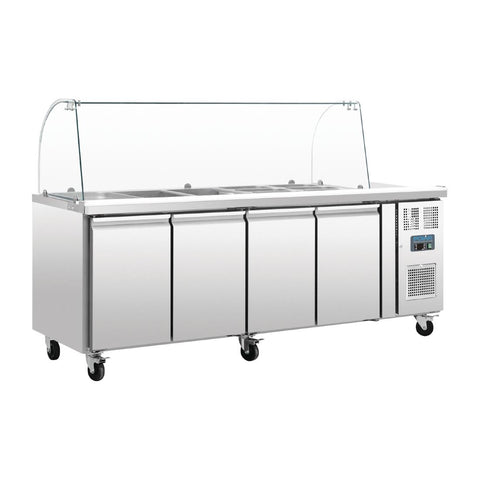

 Polar U-Series Four Door Refrigerated Gastronorm Saladette Counter - CT395-A
Polar U-Series Four Door Refrigerated Gastronorm Saladette Counter - CT395-A
2230(W) x 1360(H) x 700(D)mm
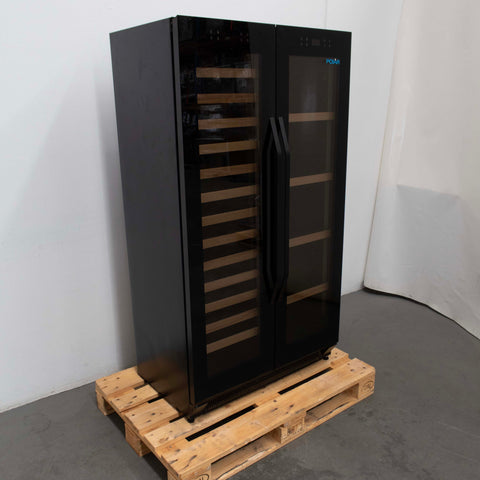

 Polar GL097-A Beer/Wine Fridge - 902314
Polar GL097-A Beer/Wine Fridge - 902314
900W x 600D x 1615Hmm
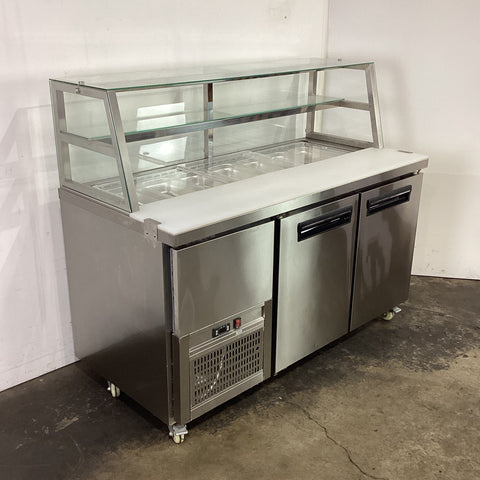

 Thermaster SCB/15 Sandwich Prep Fridge - 846565
Thermaster SCB/15 Sandwich Prep Fridge - 846565
1485W x 700D x 1240Hmm
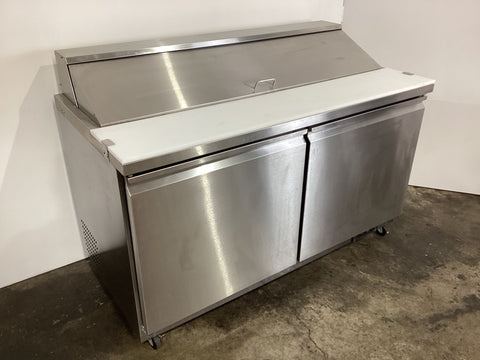

 Federal TSB1555 Sandwich Prep Fridge - 766567
Federal TSB1555 Sandwich Prep Fridge - 766567
1555W x 760D x 1110Hmm
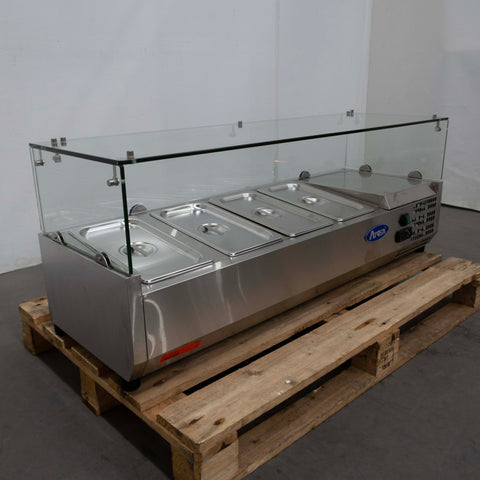

 Atosa ESL3881 Countertop Sandwich Prep Fridge - 834715
Atosa ESL3881 Countertop Sandwich Prep Fridge - 834715
1210W x 400D x 450Hmm
Whether you’re serving your customers delicious and freshly prepared salads yourself or want a buffet-style self-serve setup, salad bar fridges are essential. Designed to keep your salad ingredients fresh, crisp and perfectly chilled, whether you incorporate vegetables or fruit, they’re designed to maintain the quality and flavour of whatever you’re serving.
No matter how many customers you’re feeding, how much space you have or what your requirements are for a salad bar fridge, you’ll find the perfect option here. At Restaurant Equipment Online, we provide establishments with a broad range of kitchen appliances and can ship anywhere in Australia. Explore the range now and transform the way you store and serve your in-house salads!
Salad bar fridges are another versatile, uniquely designed commercial fridge with the express purpose of ensuring you’re delivering the freshest salads to your customers. They come with a host of benefits and features, including improving efficiency, food quality and hygiene.
With both open, self-serve salad fridges for customers to use themselves and options with glass windows for staff-serving, they display your ingredient options in an appealing way. This design also helps to make serving faster, allowing you to get through greater customer numbers for those high-turnover lunch hours.
Commercial refrigerated salad bars also ensure your ingredients are kept at the optimal temperature for freshness and flavour. At the end of each day, they’re incredibly easy appliances to clean out, ensuring they’re sanitised and ready for the next day. This not only reduces your labour hours spent on cleaning but also reduces food spoilage, saving you stock and money in the long run.
Each model of salad bar fridge will have slightly different features. However, tthere are a number of common elements that help to keep your produce crisp and fresh while also reducing the chances of contamination.
When it comes to ensuring the freshness of your food, features like automatic defrosting ensure consistent temperatures and optimal cooling performance. Many models also come with hoods or lids to help keep the ingredients evenly surrounded by cool air, with easy access when you need to prepare food.
To ensure hygiene, stainless steel construction facilitates easy cleaning and sanitisation at the end of each shift. For models designed for staff to serve customers, sneeze guards protect the stock while still clearly displaying everything.
In order to choose the best-size salad fridge for your cafe or restaurant, you’ll need to consider three things. Look at your average turnover, how much storage space you need and what your menu looks like.
If salads are one of your key menu offerings, you may want to opt for a larger salad bar fridge. Consider both where it’ll be placed and how many ingredients you want to stock on any given day. If salads are an add-on or used as a base for other meals you prepare, a smaller model may be adequate.
After a shift has ended, any remaining ingredients that you want to keep will be best stored in a fridge for the next day. It is important to account for adequate room in your fridge for any leftovers so you can reduce food waste.
To get the most life out of your salad bar fridge and get the best return on investment, regular cleaning and maintenance are essential. At the end of each shift, remove any remaining ingredients and either store them or dispose of them. Then, sanitise all the containers or put removable, dishwasher-safe parts in to be cleaned. You’ll also need to change the water in the pans, preferably before use, so it can cool down adequately to keep everything fresh and properly chilled and at the right level of humidity.
To keep your greens fresh, crisp and looking and tasting their best, keep them at around 4℃, with a maximum of 5℃ before you start to compromise their quality. When you buy a salad bar fridge, you’ll find a digital, easily adjustable thermostat that allows you to precisely adjust and control the temperature of your produce.
Yes! With their reliable chilling, individual compartments and easy access, you can use a bar fridge for menu items other than salads. Whether you want to display and store things like cold-cut meats, desserts, and fruit or have a designated station for specific dietary needs, they’re the perfect way to enhance your menu offering.
Depending on the size you choose and how many individual trays you have in the model you opted for, you can arrange your produce in a number of ways. We recommend laying it out in sequential order, starting with your base ingredients on one side, followed by additional vegetable ingredients, toppings and even sauces or protein like meat or tofo towards the end.
This creates a logical flow for customers or your staff to follow while also reducing the chances of accidentally mixing ingredients that you’d prefer to keep separate.
How long your produce will last will depend on how you’ve prepared it and the nature of the individual ingredients themselves. While your salad bar fridge will offer a consistent and reliable temperature, more delicate things like leafy greens will usually last a maximum of three days before they need to be disposed of. Firmer vegetables, such as those that are usually served whole, like cherry tomatoes, or retain their shape and water content, will last longer. However, you may want to check their condition before serving to ensure optimal freshness and quality for your customers.